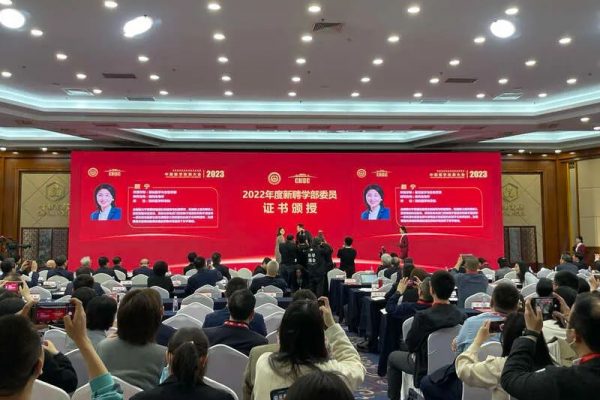Chip发表中科大邹长铃-清华大学孙麓岩团队合作综述论文:量子信息处理的超导光子声子混合芯片
FUTURE远见| 2022-08-19
Future|远见
Future|远见future选编
本综述介绍了光子与超导集成芯片在量子信息处理领域的发展与挑战,以及超导-光子-声子混合集成量子芯片对解决这些挑战可能做出的贡献。
量子计算由于其独特的并行计算优势受到了广泛的关注。近年来,多种量子信息处理平台(如中性原子,离子阱,光子和超导集成电路等)由于各自的优势都得到了广泛的发展,其中以光量子芯片和低温超导量子芯片为代表的固态量子芯片由于小体积、 高稳定性和高可拓展性成为非常有竞争力的发展平台。
图1 | (a)可编程集成量子光子回路, (b)固态可编程超导量子处理器,(c)体声波谐振腔,(d)高频集成声子回路
文章首先分别介绍了光子和低温超导量子芯片的发展现状与挑战。其中,光子由于其百太赫兹量级的工作频率具有非常小的热光子激发,可以很好地维持其量子相干性。因此,利用集成光量子芯片有望在将来发展出一种室温量子信息处理平台,有助于拓展其使用场景²,如图1(a)。虽然集成光量子芯片具有以上优势,但它受限于材料色散系数和传播损耗的制衡以及材料本身的弱非线性系数,为了实现复杂的量子信息处理,集成光量子芯片依然面临一些挑战,如缺乏高效的片上光存储器、延时器和强非线性。
相比之下,虽然超导系统是利用复杂且精密的稀释制冷机在mK的温度下工作以降低环境的热激发,但基于可编程固态超导量子芯片的量子信息处理平台发展则更加超前³。由于宏观尺度下的超导电路具有很高的可设计性,多种不同性质的超导比特(如电荷量子比特、相位量子比特和磁通量子比特)及其演变结构极大地丰富了超导量子芯片所能设计的哈密顿量类型和相应的量子信息处理能力⁴⁻⁵ 。在过去的十几年里,得益于微纳加工工艺、材料以及设计水平的不断发展,超导比特的相干时间、门操作保真度以及信息读取速度都得到了极大的提高。基于这些进展,芝加哥大学、谷歌等团队⁶和中国科学技术大学团队⁷分别在超导量子芯片上制备了53个比特和66个比特的超导回路并且验证了量子优越性(图1(b))。但是,随着将来超导比特数目的继续增加,大规模集成的超导量子芯片也将面临一些困难:
(1)由于超导比特和片上微波器件巨大的尺寸失配,系统的集成度很难提高;
(2)随着比特数目的增加,如何布线以抑制微波串扰也将是面临的一个难题;
(3)工作于微波波段的超导量子芯片不利于高效的量子信息传输,如何高效地将微波携带的量子信息转换到通信波段以实现远距离的传输也至关重要。
图2 |(a)基于表面声波的量子态传输和远程纠缠,(b)基于超导-光子-声子混合集成芯片的超导比特量子信息的光学读出
文章陈述结合集成光量子芯片和超导量子芯片各自的优势和面临的核心挑战,将二者有机地结合可以发挥各自的优势解决彼此面临的一些问题。但是,通信波段光子与超导系统天然不兼容:一方面,由于光波与微波的频率相差巨大,二者很难直接相互作用;另一方面,超导金属对光波的吸收容易破坏低温环境且给光波带来损耗。因此,引入GHz的高频声子作为媒介是一种可行的方法⁴⁻⁵ (图1(c-d))。通过引入声子实现声子、光子、超导系统的混合集成具有以下优势:利用高效的光-声相互作用和微波-声波相互作用可以实现高效的光波-微波频率转换,解决微波量子信息无法远距离传输的问题⁷(图2(b));此外,由于声子的传播速度比光子慢五个数量级,非常适合做延时⁶(图2(a)),且相同频率下集成声子器件的尺寸也比微波器件的尺寸小五个数量级。因此,利用集成声子器件代替微波器件将可以极大地提高超导量子芯片的集成度;由于声波在真空中无法传播且高频声波的波长很短,利用声子可以减小芯片上各个器件的串扰。
基于量子芯片在近年来的激动人心的进展,混合集成量子芯片毫无疑问地将会在分布式量子计算、量子网络、量子通信和基础物理等研究方面扮演越来越重要的角色。
Hybrid superconducting-photonic-phononic chip for quantum information processing¹
Quantum computing has attracted broad attention because of its unique parallel computing advantages. In recent years, many quantum information processing platforms, such as neutral atoms, ion traps, and photonic and superconducting integrated circuits, have seen rapid developments. Among these, the solid quantum chips represented by integrated photonic and superconducting quantum chips have become competitive platforms due to their advantages of small volume, high stability and high expansibility.
In this review, we first introduce the current status and challenges of integrated photonic and superconducting quantum chips. For integrated photonic chips, the quantum coherence of electromagnetic waves with frequencies of hundreds of terahertz can be well maintained at room temperature, as the thermal photon excitation noise in this frequency band is negligible². A room-temperature quantum information processing platform based on integrated photonic chips can thus be potentially constructed, and room-temperature operation will help to extend such a platform’s application scenarios. Although the integrated photonic quantum chip has the above advantages, the realization of functional quantum information processing is limited by the trade-off between the dispersion and the loss of the optical material as well as the low nonlinear optical coefficients, as well as the challenges of high-efficiency on-chip optical memory and strong optical nonlinearity.
In comparison, although a rigorous cryogenic environment of mK is required to reduce the thermal excitations, the development of quantum information processing based on programmable solid-state superconducting quantum chips is much more advanced compared to photonic quantum chips³. Due to the high flexibility of macroscopic superconducting circuits, many different types of superconducting qubits, such as charge qubits, phase qubits, flux qubits, have been realized and applied to quantum information processing⁴⁻⁵. In the past decades, benefiting from the development of nanofabrication, material science and device designs, the coherence times, gate operation fidelity, and readout of superconducting qubits have been significantly improved. With these developments, research groups from the University of Chicago and Google Inc.⁶, and from the University of Science and Technology of China⁷ have prepared 53-qubit and 66-qubit superconducting circuits on chips and verified the quantum advantage, respectively. With a further increase in the number of superconducting qubits, large-scale integrated superconducting quantum chips will face some limitations: the integration degree of the system is hard to be further improved due to the large size mismatch between the superconducting qubits and the integrated microwave devices. In addition, in such a large-scale integrated chip, packaging and wiring capable of achieving minimum microwave crosstalk are also challenging. Lastly, because the microwave operating band is unsuitable for long-distance transmission, how to convert the information carried by the microwave to telecom wavelengths also presents a critical problem.
According to the respective advantages and core challenges faced by integrated photonic quantum chips and superconducting quantum chips, the organic combination of the two systems can give full play to their advantages and solve many of their problems. However, the two systems are incompatible; on the one hand, the large gap in frequency between optical waves and microwaves makes it difficult for them to interact with each other directly. On the other hand, the absorption of the optical wave by the superconducting material will break the cryogenic environment. Introducing high-frequency phonons in the GHz frequency band as a medium is a feasible solution⁴⁻⁵. By using photon-phonon and microwave-phonon interaction, high-efficiency optical-microwave quantum frequency conversion can be realized to solve the problem that microwaves cannot be transmitted over long distances⁷. Since the propagation speed of the acoustic wave is five orders of magnitude slower than that of the electromagnetic wave, it is suitable for memory and delay⁶. In addition, the corresponding size of integrated phononic devices could also be orders of magnitude smaller than that of microwave devices at the same working frequency, and thus, the integrated degree of the hybrid superconducting chip can also be improved. Additionally, because acoustic waves cannot propagate in vacuum and the wavelength of high-frequency phonons is small, using integrated phononic devices instead of microwave devices, can greatly suppress the crosstalk between the on-chip devices.
With the encouraging and remarkable developments of quantum chips in recent years, hybrid integrated quantum chips will undoubtedly play an increasingly important role in all aspects of state-of-the-art quantum science and technologies, ranging from quantum network, distributed quantum computation, quantum communication, to fundamental physics research.
参考文献:
[1]Xu, X.-B., Wang, W.-T., Sun, L.-Y. & Zou, C.-L. Hybrid superconducting-photonic-phononic chip for quantum information processing, Chip 1, 100016 (2022).
[2]Wang, J. et al. Multidimensional quantum entanglement with large-scale integrated optics. Science 360, 285 (2018).
[3]Wu, Y. et al., Strong quantum computational advantage using a superconducting quantum processor. Phys. Rev. Lett. 127, 180501 (2021).
[4]Chu, Y. et al. Quantum acoustics with superconducting qubits. Science 358, 199 (2017).
[5]Xu, X.-B. et al. High-frequency traveling-wave phononic cavity with sub-micron wavelength. Appl. Phys. Lett. 120, 163503 (2022).
[6]Bienfait, A. et al., Phonon-mediated quantum state transfer and remote qubit entanglement. Science 364, 368 (2019).
[7]Mirhosseini, M., Sipahigil, A., Kalaee, M. & Painter, O. Superconducting qubit to optical photon transduction. Nature 588, 599 (2020).
论文链接:
https://www.sciencedirect.com/science/article/pii/S2709472322000144
关于Chip
Chip是全球唯一聚焦芯片类研究的综合性国际期刊,已入选由中国科协、教育部、科技部、中科院等单位联合实施的「中国科技期刊卓越行动计划高起点新刊项目」,为科技部鼓励发表「三类高质量论文」期刊之一。
Chip期刊由上海交通大学与Elsevier集团合作出版,并与多家国内外知名学术组织展开合作,为学术会议提供高质量交流平台。
Chip秉承创刊理念: All About Chip,聚焦芯片,兼容并包,旨在发表与芯片相关的各科研领域尖端突破性成果,助力未来芯片科技发展。迄今为止,Chip已在其编委会汇集了来自13个国家的68名世界知名专家学者,其中包括多名中外院士及IEEE、ACM、Optica等知名国际学会终身会士(Fellow)。
Chip第三期将于2022年9月在爱思唯尔Chip官网以金色开放获取形式(Gold Open Access)发布,欢迎访问阅读文章。
爱思唯尔Chip官网:
https://www.journals.elsevier.com/chip
Warning: Invalid argument supplied for foreach() in /www/wwwroot/www.futureyuanjian.com/wp-content/themes/future/single-news.php on line 41



